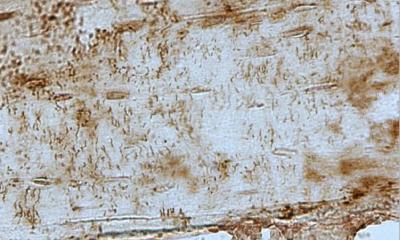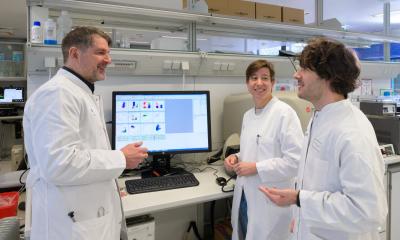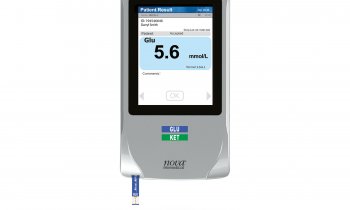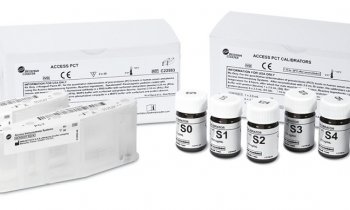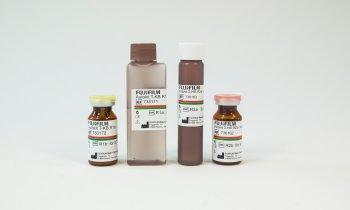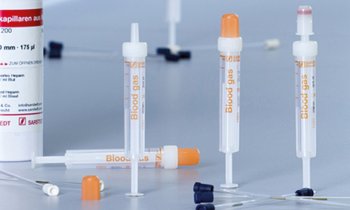Princeton Engineers Develop a Non-invasive Blood Glucose Test that Uses Imaging Technology
Glucose testing is both a headache and an opportunity for clinical laboratories here in the United States and across the globe. It is a headache because many point-of-care and patient self-test glucose devices in wide use today lack the reliability of glucose testing performed in medical laboratories that use sophisticated diagnostic instruments.
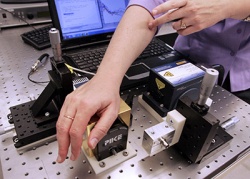
It is an opportunity because, here in the United States and across the globe, there are tens of millions of type 2 diabetics and hundreds of millions of pre-diabetics. Health systems have an unmet demand for glucose testing that is non-invasive, accurate, can be done in patient care settings, and is cheap.
Recently, researchers at Princeton University announced development of noninvasive, in vivo glucose sensor technology that uses a broad-spectrum band of infrared (IR) light to accurately measure blood sugar.
The clinical market for such a device is huge. Just in the United States, there are more than 30 million diagnosed with type 2 diabetes, and more than 70 million pre-diabetics. Researchers have been working for some time to develop a patient-friendly glucose-monitoring technology that does not require a needle stick or venipuncture.
Although such a device could shift glucose testing away from medical laboratories, pathologists and clinical laboratory managers should bear in mind that a noninvasive device might also encourage diabetes patients—about a quarter million of which are teens and children—to more closely monitor their blood sugar levels.
Laser Technology Targets Tissue Fluid, Not Blood
Led by Princeton University Professor Claire Gmachl, Ph.D., the research team adapted a quantum cascade laser (QCL) to measure glucose concentration in dermal interstitial fluid, known to correlate with blood glucose levels. This specialized laser detects blood-sugar level through a person’s palm.
“The laser passes through the skin cells without causing damage and is partially absorbed by the sugar molecules in the patient’s body. We use the amount of absorption to measure the level of blood sugar,” wrote lead author Sabbir Liakat, a doctoral candidate in electrical engineering at Princeton, in an article published in Biomedical Optics Express.
Sensing Technology Proved Clinically Accurate
A standard glucose test of in vivo spectral differences before (low glucose level) and after (high glucose level) consumption of 15 jellybeans was used to initially evaluate the technology’s accuracy. “Mid-IR spectra obtained from human skin yield clinically accurate predictions for blood glucose levels for concentrations between 75 and 160 mg/dL using both PLSR (partial least squares regression) and derivative spectroscopy techniques,” said Liakat. “Best-case scenarios with given calibration sets yielded average errors only 2% more than those from a commercial electrochemical meter. Based on these results, we conclude that this application of mid-IR light to noninvasive, in vivo glucose-sensing yields a robust and clinically accurate system that transcends boundaries set in the past, which limited the scope of mid-IR in vivo applications.
“The team was pleasantly surprised at the accuracy of the method. Glucose monitors are required to produce a blood-sugar reading within 20% of the patient’s actual level, which was achieved by even an early version of our system,” Liakat said in a report published by optics.org. “The current version is 84% accurate. It works now, but we are still trying to improve it.
“We are currently in the process of implementing our system in field trials,” Liakat continued, noting that two medical centers have expressed interest in a collaboration. “This would allow us to obtain data from their diabetic patients in order to test our system on a larger clinical scale. The next stages of R&D will involve both hardware and software developments.”
Miniaturization Next Step
Currently the technology is housed on a mobile cart, but the researchers plan to shrink the laser system to a portable product size that can be used for self-testing by diabetics. “One the hardware side, we will miniaturize the system to occupy the smallest area possible, as well as implement a custom laser best suited for our application,” said Liakat. “The parameters of this laser, namely scanning time, scanning resolution, and tuning range, are based on results from our current data set.”
QCL Laser Has Other Medical Diagnostic Uses
“Because the quantum cascade laser can be designed to emit light across a wide wavelength range, its usability is not just for glucose detection, but could conceivably be used for other medical sensing and monitoring applications,” noted Gmachl. Another use of the device was described by Liakat. He explained that the QCL, because it can sense any relevant molecules with strong mid-IR absorption features within the upper layers of
Source: Patricia Kirk / www.darkdaily.com
19.01.2015



